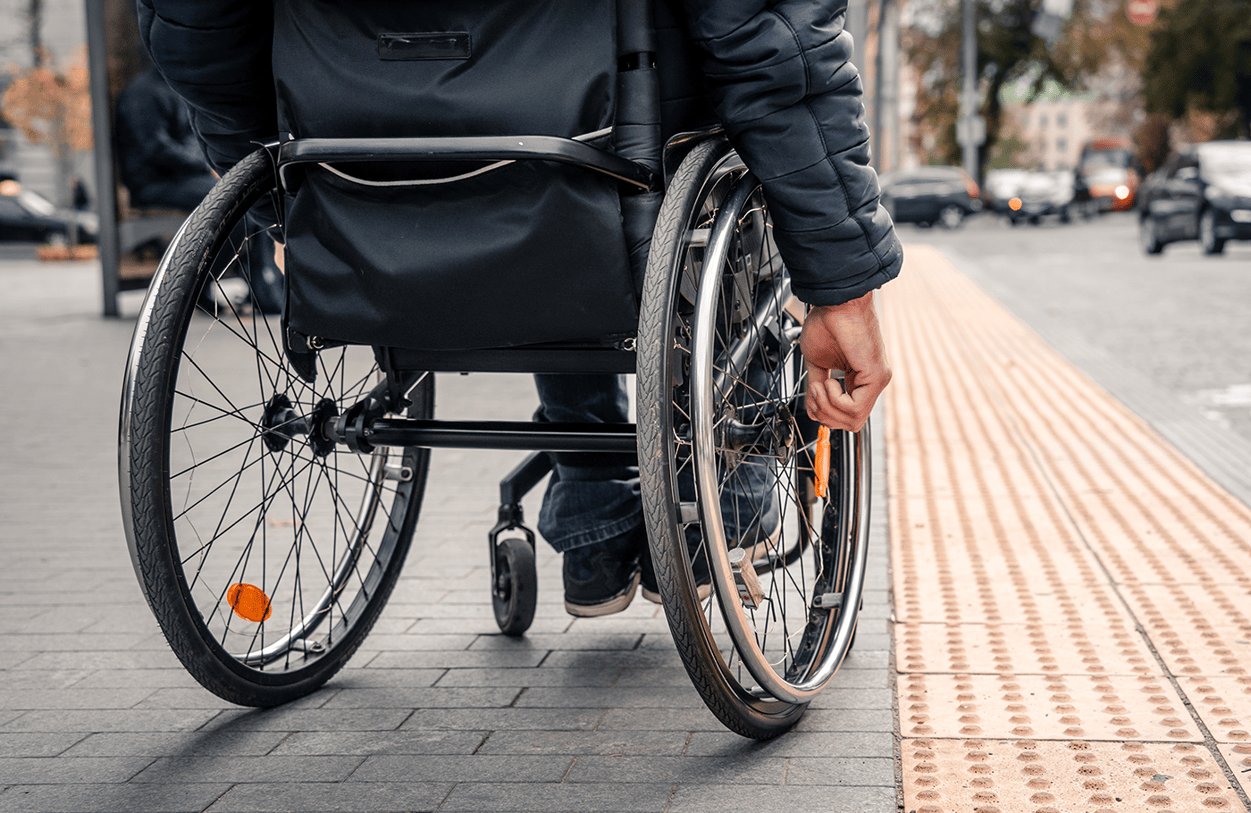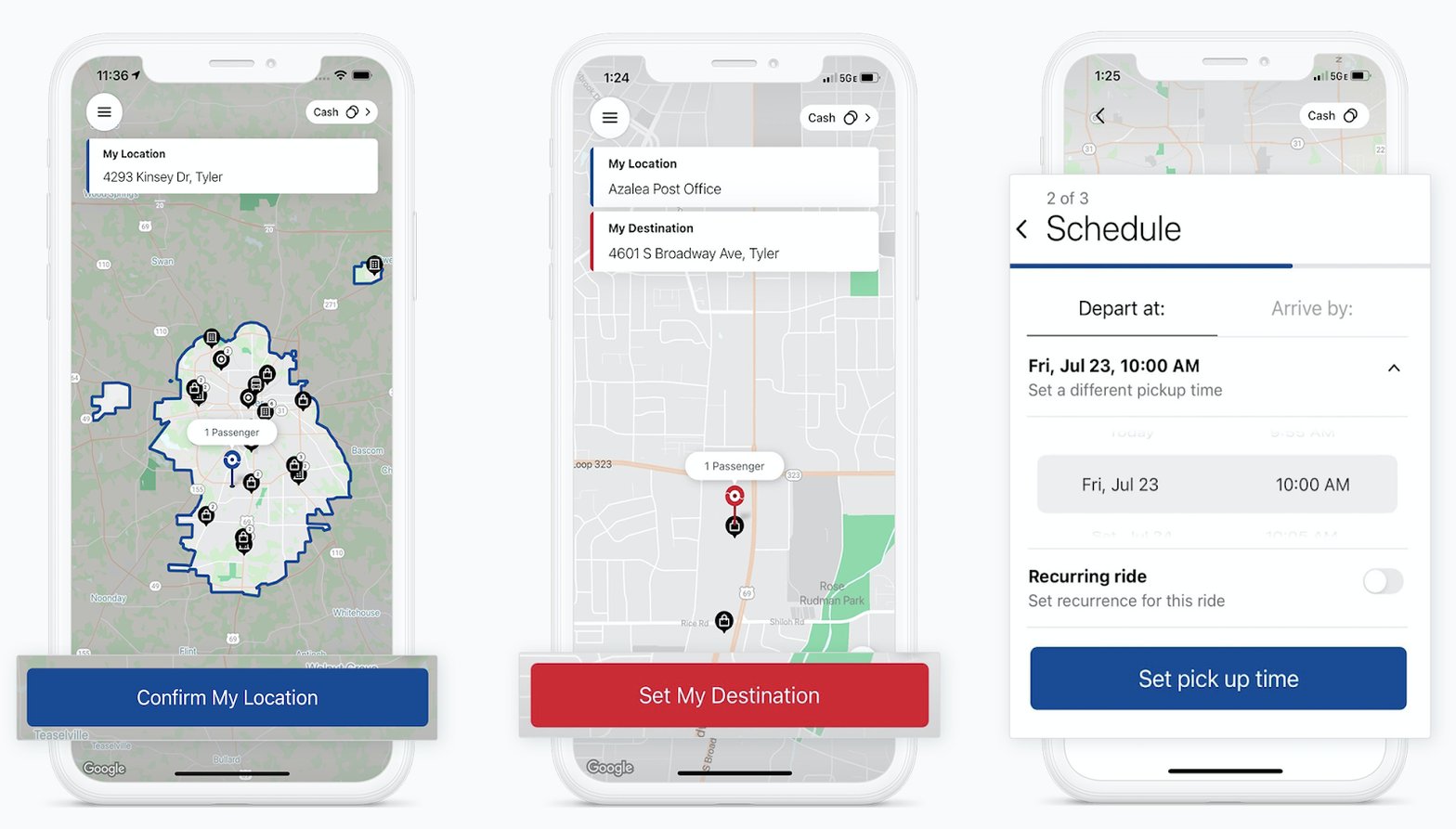Thirty-two years ago, the Americans with Disabilities Act became a civil rights law prohibiting discrimination on the basis of disability in the US. Since then, these landmark ADA regulations have been extended to transportation areas to ensure equitable mobility rights for people with disabilities. However, dozens of years later since the ADA law has passed, many individuals with physical impairments living in major cities like New York, LA, and Washington D.C. are still faced with mobility challenges to different degrees — a survey conducted by a medical supply company shows nearly 30% of respondents who live with or are companions to people with disabilities struggle to access transportation, a service, or a building at least once per week. About 12% say it happens multiple times every day.
To help transit leaders conduct more equitable, and rider-friendly services for the 25 million US individuals who have travel-limiting disabilities and rely on paratransit to reach essential destinations, we collected a few easy-to-implement solutions that ensure riders’ sa tisfaction, from our years of experience as paratransit tech providers. Let’s get started.
1. Understand riders' feelings about paratransit.
There is never a one-size-fits-all solution to meeting the diverse needs of a diverse community. Individuals living with different types of disabilities usually have unique concerns regarding changes to their existing transit landscape. That’s why before rolling out a paratransit-specific service or introducing new technologies to a community, agencies should always give ears to the customer they serve, understand their needs and desires, and generate actionable feedback during the consulting phase. Hosting focus group testing for vulnerable community members could be a good starting point, as these high-touch meetings, in real life or conducted virtually, allow planners to hear riders’ feedback and get valuable insights to improve products and achieve the best levels of user adoption when service launches.
When conducting group testing with riders with visual impairments in Virginia, we learned that a feature in the proposed Rider App, which requires riders to select an exact pickup hour and then a minute, was particularly hard for those who use screen readers. As a result, we upgraded the app to automatically detect if a rider is using a screen reader, and if so, to offer the option to set time manually using the keypad. Besides the kick-off test meetings, it’s equally important to collect feedback on a regular basis — from both focus and advocacy groups to ensure continued reliable service responding to evolving riders’ needs. For example, we hold meetings with the Paratransit Advisory Committee in Hampton Roads, VA, every other month to understand the community’s impression of the service, and plan for adjusting service design and/or introducing new features.
Community members enjoy seeing the development of the service and participating in its evolution. As one paratransit rider spoke to Hampton Road Transit, "I really like the improvements you have now. I can look on the app and see how far away the ride is. I am getting text messages, showing me my schedules, and giving me phone calls, telling me my schedules. Those really help a lot."
2. Evaluate experience-oriented metrics.
While qualitative inputs like rider feedback let paratransit operators know what is (and isn’t) working for their riders, it doesn’t take dozens of community meetings to improve services. There are a few quantitative indicators that can disclose how well the network is serving its community.
A) On-time percentage.
When riders are waiting for their vehicle, an unexpected delay is the last thing they want. A late or missed trip could mean surgeries that need to be rescheduled, more doctor’s visit fees that had to be paid, or even job loss. Agencies should value on-time performance (OTP) and reducing missed trips, because it’s often the most important indicator that reveals how riders feel about the system's reliability. Indeed, qualitative feedback supports the importance of OTP to service satisfaction, with one rider in Virginia noting, “I really like getting called in the morning at 5:30 AM instead of 6:00 AM. My driver picked me up this morning, took me to work straight, and got me to work right on time.”
Tyler paratransit rider app where riders can book trips and get real-time updates about driver locations and ETAs.
B) Time onboard.
Rides that go in circles causing excessive onboard time is another factor that drives riders’ frustration — overly long trips can threaten customer experience, keeping them away from a truly “parallel,” equivalent service provided by traditional public transit. For years, paratransit riders in Hampton Road (VA) encountered lengthy travel times due to heavy traffic and long or circuitous routes. To solve this problem, local leadership invested in new technology, which optimized route planning, resulting in fewer detours and easier travel. Since launch of the upgraded service, onboard time was cut by 42% from 45 minutes to 26 even as productivity has increased.
C) Level of visibility into their trips.
According to a Via 2020 customer survey , nearly 70% of riders indicated that getting timely trip updates, like drivers’ location en route, departure times and trip duration, would increase their use of public transit. At the same time, service unpredictability has long been a complaint from paratransit riders.
Thankfully, an app-based booking option is giving new freedom and transparency to riders. Although booking rides by mobile phone is a novel experience, many paratransit riders in Green Bay, WI, have turned into the biggest advocates for this new service, as traveling becomes much easier when they get trip updates directly from their own phones without having to go through the calling center. One rider commented, “[This app] will give me the tools to know where my ride is.” Another added, “I love that I get an ETA, which has been spot on.”
3. Find the best software provider.
With a clear list of major metrics that matter to your riders in mind, the next step is to find solutions that cater to all your experience-oriented requirements. But, for teams without enough in-house tech experts, building a new platform from scratch is no easy work. That’s why transit agencies, big and small, are partnering with third-party companies to build their own paratransit network with an app-based interface, using their existing fleet. As agencies explore a partnership with a tech company to invest in new software, remember: An effective solution oftentimes starts with a few key features:
- Fully automated software that results in reliable schedules and precise arrival times. It’s important to match supply to demand and reassign trips to new vehicles when unexpected situations happen like when a driver runs late or calls in sick, traffic conditions change, or riders cancel trips. The mode should greatly eliminate human dispatchers by sending ride requests to drivers, automatically, by scale, and be responsive to the changing rider’s demands.
- Smart shared-ride scheduling with demonstrated ability to balance trip duration and passenger aggregation, by including parameters like “maximum ride time” or “maximum detour”, so that no planned ride exceeds an agency’s target, which aligns with riders expectations. Dynamically, the algorithm guarantees that no new riders are added to a vehicle if their trip will push other riders outside of this maximum time goal.
- A user-friendly app where riders can manage and track everything about their trips, and get real-time notifications in one place. Besides an intuitive interface, don’t forget accessibility features, like font adjustments, a speak screen, for communities with visual impairments. While being aware that not all riders are accessible to the internet or cell phones, transit agencies like HRT allow riders to call a live dispatcher as before and receive trip statuses with automated calls and interactive voice response (IVR) and SMS.





